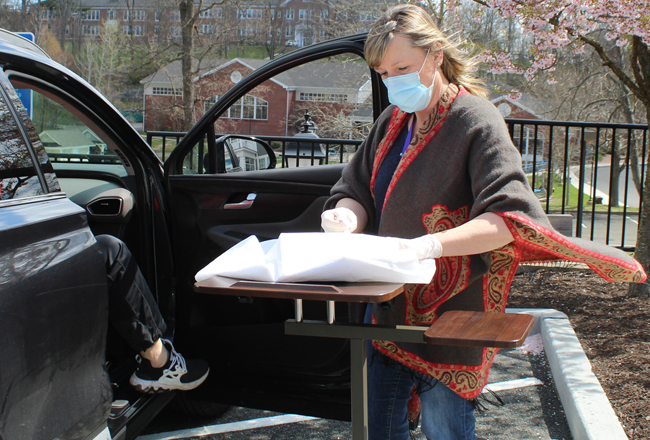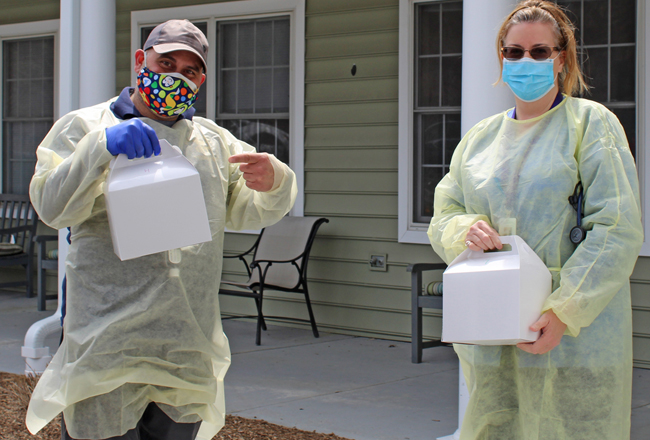Ridgefield’s RVNAhealth rises to the challenge in unsettled environment

While it”™s hardly business as usual at RVNAhealth ”” formerly the Ridgefield Visiting Nurse Association ”” its staff of 250-plus has kept up its defense in responding to the pandemic even as the governor said it has passed its peak.
“We”™ve remained pretty strong with our public health and community service lines, in alignment with the town of Ridgefield,” President and CEO Theresa Santoro said. “And we”™ve had a lot of prior experience with public health crises ”” Hurricanes Sandy and Irene, H1N1, the swine flu. We”™ve been down this road before.”
Not that COVID-19 has been a walk in the park, Santoro cautioned. The home health and hospice services provider has cared for more than 100 COVID-19 patients since the coronavirus arrived in Connecticut in early March. New admissions continue daily from across RVNA”™s service region, which extends roughly from Greenwich to Southbury, reflecting the expanding COVID population. They are expected to continue through at least the next several weeks, Santoro said.
While Gov. Ned Lamont is maintaining that the general decline of virus-related hospitalizations in Fairfield County indicates that it has passed its peak, Santoro said that has not been her experience.
“We just admitted five more positive patients yesterday (April 23),” she said, “and they all fell ill in their private homes, not in a hospital or other facility. And we”™re still all out in full force. There”™s been no slowdown for us.”
While some RVNA staff ”” mostly nonhealth care workers ”” are telecommuting, Santoro emphasized that the majority of its 63 nurses are out in the field.

The group”™s experience dealing with past health care emergencies helped make it ready for the current situation, she said, with preparations beginning soon after the coronavirus news began arriving from China.
“We were mobilizing and going into emergency mode in January and February,” Santoro said. “And we began sourcing PPE very early, as it quickly became apparent that we were going to be called upon to care for COVID-19 patients.”
Thanks to longstanding relationships with some PPE vendors, RVNA got something of a jump on the situation, she said.
“And we”™ve also received donations from all over the place ”” $10 here, $20 there ”” from the community, who have been very generous, along with the Department of Public Health.”
Even so, as the crisis worsened, RVNA began paying top dollar, as has been the case with nearly all providers.
“We spent about $40,000 over the last two weeks of March,” Santoro said. “Surgical masks, which usually cost around 60 cents, were almost $4 apiece, at a time when we needed hundreds of them.
“But that was never a consideration,” she said. “I”™m never going to cut corners when it comes to protecting our staff and patients. I paid what I was quoted and we continued with our mission.”
A large part of that mission involves continuing care for its non-COVID patient population.
“Our physical therapists and occupational therapists are still doing what they”™ve always done,” Santoro said, “and we”™ve seen a significant uptick in our 24/7 live-ins, who include the elderly who oftentimes can”™t live unsupervised.”
Hospitals”™ postponing elective surgeries has also resulted in a greater need for short-term care, she said, as well as for RVNA”™s outpatient rehab services.
In addition, curbside vaccinations for flu and other conditions ”” usually provided only occasionally ”” are now being done more regularly, as many patients have grown reluctant to enter the premises.
Through it all, Santoro said, RVNA will remain ready for the next challenge.
“We have a very strong infrastructure, a dedicated team, and the tools necessary,” she said.